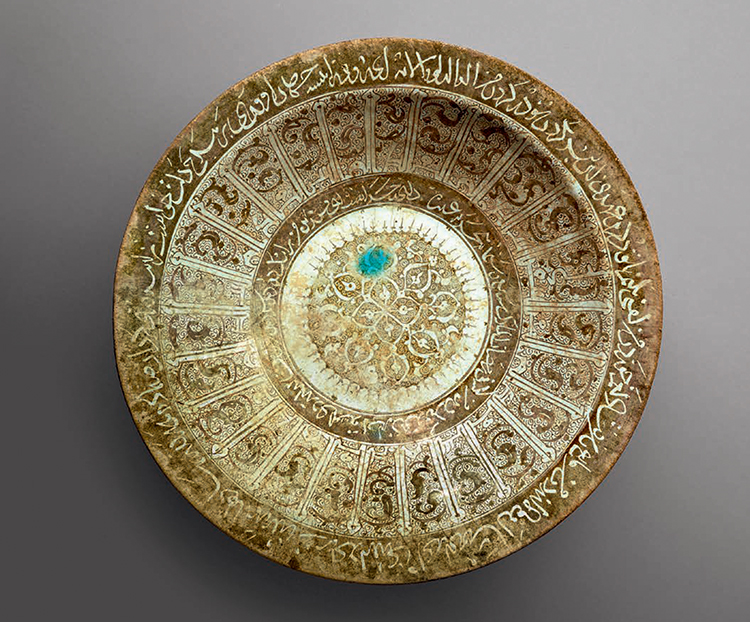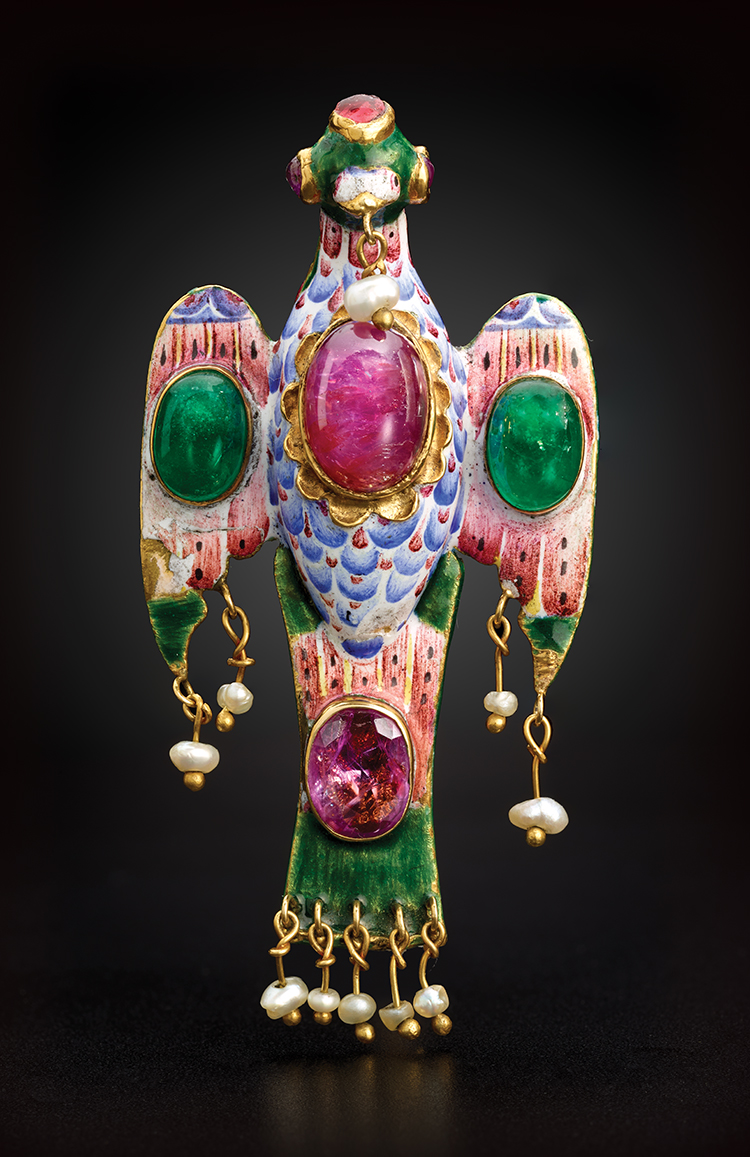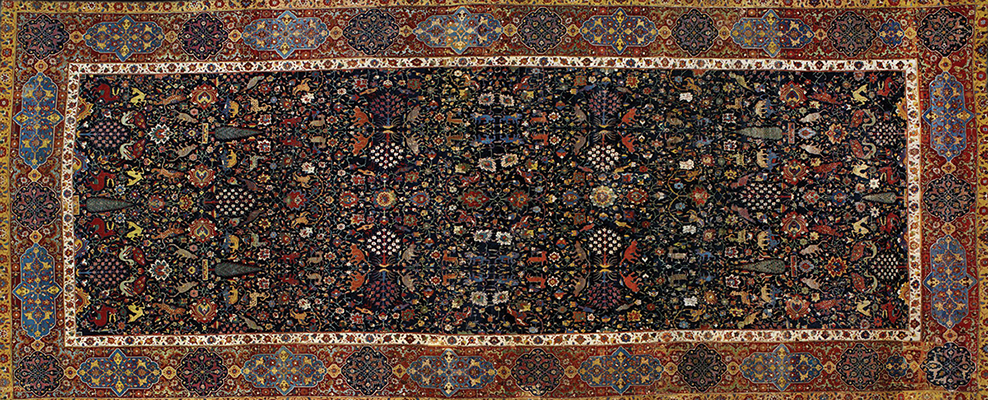On view through April 18

Dara and His Herdsman, folio from a Bustan of Sa’di, Uzbekistan, Bukhara, ca. 1530–1550, ink, opaque watercolor, gold, and silver on paper. The Hossein Afshar Collection at the Museum of Fine Arts, Houston.
This exhibition celebrates the rich artistic traditions of Persian civilization through the significant private collection of Hossein Afshar, with works from the sixth to the nineteenth century, on long-term loan to the Museum of Fine Arts, Houston. Persian refers to lands where Persian language and culture were predominant, encompassing a larger area than the modern-day nation-state of Iran. Through the collector’s eyes, we see a portrait of Iran that affirms a strong sense of identity reflected and established by the visual arts as well as an artistic sensibility that has flourished over time.
Works in the exhibition include carpets, textiles, manuscripts, paintings, ceramics, lacquer, metalwork, and jeweled objects. Highlights include exquisite miniature paintings from the Shahnama (Book of Kings), the Persian national epic; rare Qur’an pages; and monumental silk carpets from the height of Safavid carpet production. Woven throughout the tales of these extraordinary artworks are experiences, ideas, and emotions shared by all peoples, grouped within the exhibition into the universal themes of faith and piety, love and longing, banquets and battles, kingship and authority, and earth and nature.
CURATOR’S CHOICE:
FAVORITE OBJECTS IN THE EXHIBITION
Dara and His Herdsman, folio from a Bustan of Sa’di, Uzbekistan, Bukhara, ca. 1530–1550, ink, opaque watercolor, gold, and silver on paper.
This work depicts a moralizing tale about distinguishing friend from foe and how a herdsman’s job to care for his horses is equivalent to a king’s responsibility to look after his subjects. I love how this artist chose to render the figures. Against several strips of vivid background—a verdant green pasture full of flora; a pink middle ground with evocative plant life, golden mountains, and a blue sky echoing a blue stream below—are wonderfully stylized animals and humans interacting. With so much activity, including animals drinking from a stream and a herdsman lassoing a horse, King Dara readying his bow is almost lost in the shuffle.
Carpet, Iran, late sixteenth–early seventeenth century, cotton warp and weft, wool pile asymmetrically knotted open to the left.
This enormous carpet takes over nearly the entire last gallery of the exhibition—and it is a showstopper! It is densely patterned and, without hierarchy, is consumed by a variety of animals, including deer, oxen, antelope, lions, tigers, peacocks, parrots, and monkeys, all intertwined with an array of such stylized motifs as floral medallions, lotus palmettes, and trees of life. Upon closer examination, the grid of construction reveals itself through repeated patterns—but colors are changed and positions rotated to create visual interest.

Dish, Iran, Kashan, Ramadan AH 607/February–March 1211, stonepaste; luster-painted on opaque white glaze. The Hossein Afshar Collection at the Museum of Fine Arts, Houston.
Dish, Iran, Kashan, Ramadan AH 607/February–March 1211, stonepaste; luster-painted on opaque white glaze.
I love works that show the hand of the maker, and this bowl from Kashan, a center for luxury ceramics and shimmering metallic lusterwares that were technically challenging, is quite evocative. There is much happening here: bands of calligraphic inscriptions in Persian and Arabic create concentric circles surrounding the central medallion, which also reveals a drop of turquoise glaze—a likely accident that occurred during the first firing before the luster was added, demonstrating the artist’s hand.
Pendant, Iran, nineteenth century, gold decorated with polychrome enamel, gemstones, and pearls.

Pendant, Iran, nineteenth century, gold decorated with polychrome enamel, gemstones, and pearls. The Hossein Afshar Collection at the Museum of Fine Arts, Houston.
The wearer of this pendant was not afraid of color! The bird-like creature’s body is consumed by polychromatic enamel paint, creating a luxurious background for vibrant gemstones and pearls. Although enameling was an old technology introduced to the Islamic world by Byzantine craftsmen, it had fallen out of favor, and the nineteenth-century resurgence in Qajar Iran may have been spurred by jewelry from Mughal India or Imperial Russia.
All works from the Hossein Afshar Collection at the Museum of Fine Arts, Houston.
Exhibition Catalogue
Bestowing Beauty: Masterpieces from Persian Lands is available for purchase at the Museum Shop and at museumshop.high.org. Members receive 10% off Shop purchases.
